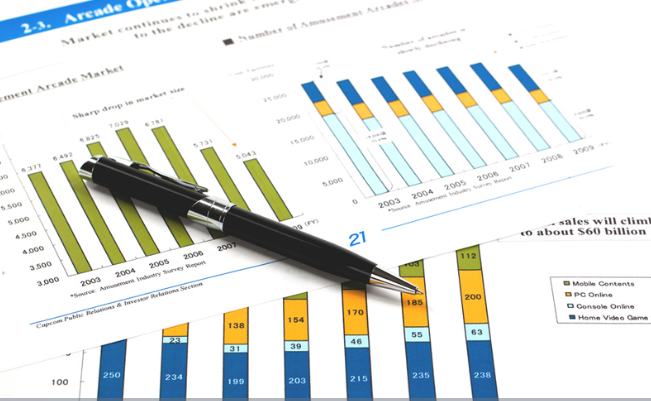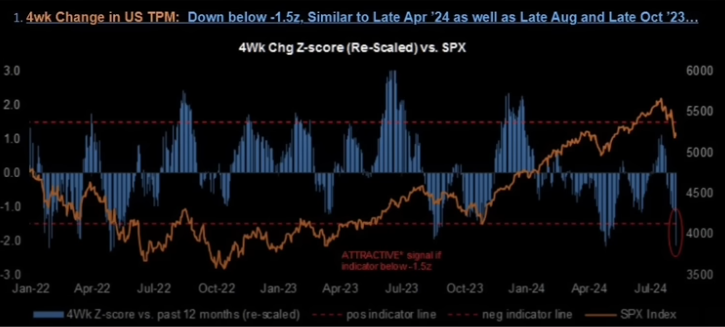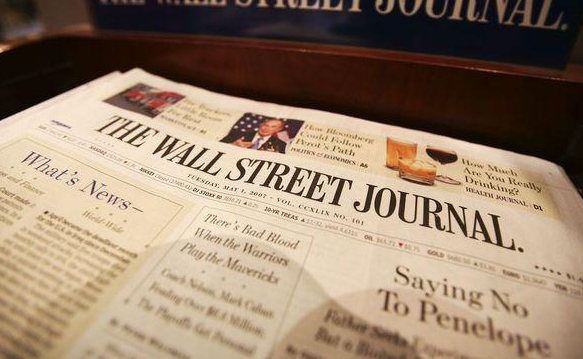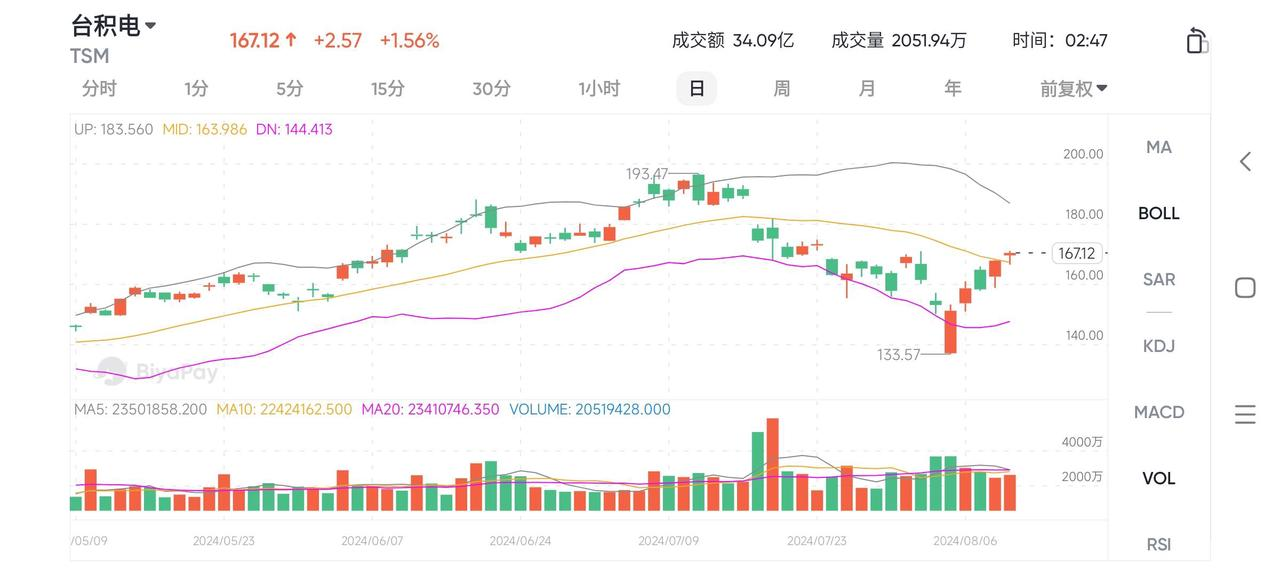- Remittance
- Exchange Rate
- Stock
- Events
- EasyCard
- More
- Download
Fed's Shift in Tone Dims Rate Cut Hopes, Sparking a Buying Frenzy: Could TSMC Emerge as a Safe Haven
The Federal Reserve’s recent demeanor has investors on edge. Previously, there was a growing expectation among the market participants for a rate cut, eagerly anticipating a stimulus that would invigorate the markets. However, the scenario has dramatically shifted, with multiple Fed officials making firm declarations that they will not easily succumb to the fervent hopes for rate reductions.

Among them, the most notable shift was by the Chicago Fed President Goolsblee, who, during an interview with Fox News last Thursday, emphatically stated: “The Fed’s decisions are solely based on economic data and will not be swayed by the political dynamics of the elections.” He asserted that the Fed’s mission remains focused on maximizing employment and stabilizing prices, and any attempt to influence its decision-making from external factors would be firmly disregarded.
These statements acted like a bombshell, causing significant turmoil in the markets early in the day, as they were interpreted as a hawkish signal by the market, leading to sharp fluctuations.
Simultaneously, the co-chair from Kansas City also voiced his opinions. Although he was somewhat encouraged by the recent dip in inflation, he cautiously noted that there was still a considerable gap to reach the inflation targets. He then emphasized that the economic conditions were not yet dire enough to warrant an immediate rate cut, which undoubtedly dampened the spirits of investors hoping for relief.

A thorough analysis by most economists, after deep research, has led to a relatively conservative conclusion. They generally believe that any rate cut by the Fed in the upcoming September might be minimal, possibly just 25 basis points. Bloomberg’s survey data harshly reveals that a staggering eighty percent of economists firmly hold this view. Additionally, ten percent of economists audaciously predict that the Fed might cut rates before September due to pressing circumstances, while another ten percent think the cut could reach 50 basis points.
This phenomenon reveals a very delicate juncture in the market, where even the slightest variation in economic data and rate cut expectations becomes highly sensitive. Even casual remarks by Fed officials can trigger significant turbulence in the markets, exaggerating the market movements and causing volatile investor sentiments. During these times, it is crucial for investors to maintain their composure and not let a single statement or piece of data alter their investment strategies.
U.S. Stock Market Buying Frenzy
Against the backdrop of the Fed’s unpredictable stance, the direction of market capital has painted a different picture. Institutional investors seem undeterred by the Fed’s firm attitude, instead showing a continuous resolve to buy the dip.

On Monday, J.P. Morgan’s trading department took the lead, suggesting that the rotational sell-off of tech stocks was likely nearing its end, and the overall market was approaching an optimal time for bottom-fishing.
However, the head of position management at J.P. Morgan, while optimistic, also conveyed caution to clients. In a report to clients, he stated that the market might be nearing a tactical opportunity to buy the dip, but whether a strong rebound could ensue would heavily depend on the macroeconomic data set to be released in the coming days.
Similarly, after conducting an in-depth study, Goldman Sachs further indicated that asset managers, hedge funds, and sovereign wealth funds had decisively started bottom-fishing this week. Even though the current market prices were relatively high, the decrease in market volatility and the weakened selling momentum of trend and quantitative trading funds effectively reduced market selling pressure.
Data from EPFR Global shows that U.S. stocks have welcomed capital inflows for the sixth consecutive week, with total inflows since the beginning of the year nearing an astonishing $210 billion. UBS’s equity strategy department also offered unique insights in their latest report.
They believe that the current market pricing, when scrutinized against historical data, adequately reflects the sluggish order situation shown in the SM manufacturing surveys. They are confident that such pricing reflects investors’ firm belief that new orders will not deteriorate further and even suggest a gradual stabilization of the economy in the future. Based on this, the firm resolutely reaffirmed its year-end target, predicting that the S&P 500 could reach 5,600 points.
Undercurrents of Financial Risks
However, behind this seemingly prosperous bottom-fishing scene, there are not without concerns. In the short term, companies still advise clients to maintain a defensive strategy to navigate through the turbulence, and the bond market pricing reflects that investors remain relatively calm. The spread between government bonds and blue-chip corporate bonds reached a new high of 1.1 percent after a significant drop on Monday, the highest since last November.
The spread between high-yield bonds and government bonds also climbed to 3.81 percent, likewise a peak since last November. The Wall Street Journal noted that this shift indicates an implied default rate rise from 5.1 percent at the end of May to 5.7 percent.

Although there has been an increase, the overall level remains manageable, which indirectly shows that bond investors have not yet detected any clear signs of recession. Even some spreads between leveraged loans and high-yield bonds have shown a downward trend, undoubtedly reflecting the optimistic expectations of investors.
The frequent fluctuations in capital flows pose a complex puzzle for ordinary investors. Blindly following the footsteps of capital often only leads to lagging behind in market adjustments. Instead, I lean more towards advising investors to focus on fundamentals and long-term value investing.
Although the market risks remain high in the short term due to uncertainties such as elections and potential recessions, the macroeconomic outlook remains relatively healthy in the long run. The ongoing rotations in capital that have driven down tech stocks have not fundamentally impacted their underlying value. Therefore, instead of adjusting back and forth with the majority, it would be wiser to hold steady on favored stocks and buy at reasonable valuations for greater peace of mind.
Navigating the AI Bubble: Where Lies the Safe Haven?
When discussing stocks, one cannot overlook the recent AI bubble risks. In the current landscape of technology and investment, the rapid development of AI has directly driven the demand for high-performance computing chips, which are fundamental to AI technology implementation. TSMC plays a critical role in this sector.

Despite the Federal Reserve’s unpredictable interest rate policies, TSMC delivered a remarkable revenue report in July: data showed that its revenue reached NT$2569.5 billion, an astonishing year-over-year increase of 45%. This performance notably exceeded analysts’ expectations of 37% growth for TSMC’s third quarter, suggesting that TSMC could surpass market forecasts.
Bloomberg analysts highly praised the 45% growth rate, noting it as the second-highest in the past twenty months, aligning well with market expectations for a robust Q3 performance from TSMC.
The core driver behind this significant growth, and TSMC’s broad moat, stems from the ongoing strong demand for AI chips, with notable increases in three-nanometer orders from major clients like Apple, Qualcomm, and MediaTek. These positive factors make it very likely that TSMC will exceed its Q3 revenue guidance of $23.2 billion.
In its last earnings report, TSMC expressed a firm optimistic outlook on its business prospects.
CEO C.C. Wei mentioned that as more customers shift to the most advanced three-nanometer technology, the competition for TSMC’s limited production capacity inherently provides an excellent opportunity to increase product prices.
Therefore, TSMC’s gross margins are expected to see further growth. Last quarter, high-performance computing driven mainly by AI contributed to 52% of TSMC’s revenue, marking the first time this segment accounted for more than half of total revenues. The better-than-expected gross margin performance benefited significantly from increased shipments of three-nanometer and five-nanometer chips.
When delving into the financial reports, Counterpoint Research’s Deputy Director boldly predicted that the full-year production capacity of three-nanometer processes in 2024 would double year-over-year.
These indicators suggest that the share of three-nanometer processes will continue to expand, further supporting TSMC’s profit margin growth. Such outstanding data performance not only greatly boosts the market’s optimistic expectations for AI chip demand but also directly benefits related chip stocks like NVIDIA.
Moreover, while the market’s enthusiasm for AI investments has cooled since the beginning of the year, becoming more rational, many companies whose performances have not reflected the AI benefits have seen their stock prices fall over the past few months.
On the other hand, recent earnings reports from big tech firms clearly show that their investments in AI are still progressing, suggesting that AI chips remain the preferred investment area in the current stage of AI certainty.

This further proves that leading AI investment chip stocks like NVIDIA, TSMC, and ASML will directly benefit from outstanding performance. Today’s performance data from TSMC is the best testament to this view.
Overall, the current financial market is at a sensitive and crucial period. The changing attitudes of the Federal Reserve, the flow of market funds, the performance of individual stocks, and industry trends all intertwine to influence the market’s trajectory.
In the coming period, investors need to closely monitor the Federal Reserve’s policy directions and the release of economic data. Maintain composure during short-term market fluctuations and avoid blindly following trends or panic selling.
Looking long-term, despite various uncertainties, the advancement of technological innovations, the gradual recovery of the global economy, and the continuous development of enterprises suggest that the market still offers abundant investment opportunities. Investors should rely on rational analysis, scientific strategies, and firm beliefs to navigate the challenging market environment and achieve their investment goals.
In conclusion, whether in calm seas or turbulent waves, maintaining rationality, professionalism, and patience is the essential strategy for investors navigating the financial ocean.

























